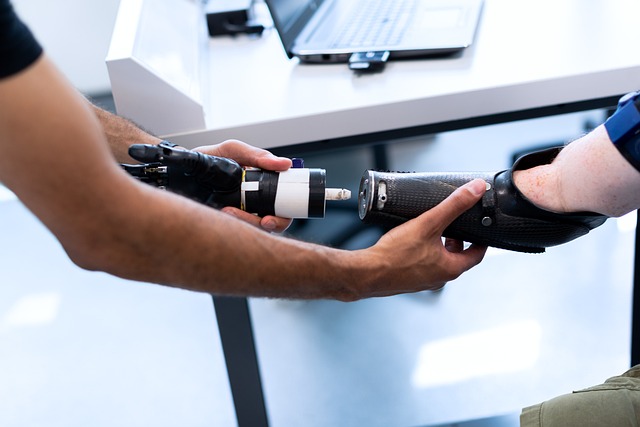The world of upper-limb prosthetics is changing faster than ever before. For individuals using trans-radial and wrist disarticulation prosthetics, the next few years are expected to bring new levels of comfort, control, and connection. Between 2025 and 2030, major progress in materials, technology, and user experience will transform how prosthetic hands look, feel, and function in everyday life.
At Robobionics, we closely follow global innovations while building Made-in-India prosthetic solutions tailored for real people. This article explores where upper-limb prosthetics are heading over the next five years. From smarter sensors to personalized sockets, and from brain-driven controls to digital rehabilitation, here’s what users can expect—and how to prepare for what’s coming next.
Smarter Control Systems Are Taking the Lead
One of the most exciting changes in trans-radial and wrist-level prosthetics is the way users will control them. In the past, most hands worked with basic switches or cables. Today, myoelectric control has become more common. But the future is looking even smarter.
Muscle Signals Are Just the Beginning
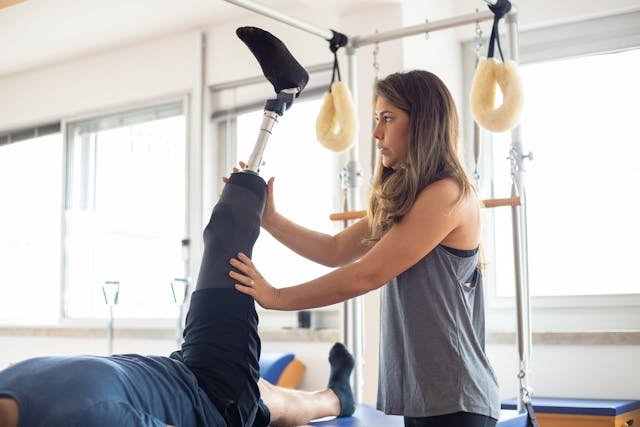
Myoelectric technology, which reads electrical signals from the muscles in the residual limb, has opened many doors. It allows users to open and close their hand, rotate the wrist, or perform basic grips. But these systems often require strong, steady muscle signals and need practice to master.
In the next few years, control systems are expected to improve dramatically. Advanced algorithms will make it easier to recognize subtle muscle signals—even in weaker limbs. This will help users with lower muscle strength or more complex limb shapes get better performance without frustration.
For people with wrist disarticulations, where more of the forearm is intact, these smarter systems will allow finer control with fewer errors. Instead of struggling with calibration or delayed response, users can expect more natural, real-time movements that truly reflect their intentions.
Pattern Recognition for Multi-Function Control
Another big shift coming is the use of pattern recognition. Instead of reading just one muscle at a time, new systems will analyze patterns from multiple sensors to understand the user’s intended motion. This allows the hand to switch between different grips automatically, based on how the muscles fire together.
With pattern recognition, users won’t need to press buttons or use long training routines to switch functions. The prosthetic will simply learn how you move—and adapt to you. This makes it easier to use the hand in real situations like typing, cooking, or even playing musical instruments.
At Robobionics, we’re already testing early-stage models with this kind of capability, and we’re excited about making them more affordable and accessible to users in India in the coming years.
AI and Machine Learning in Everyday Use
By 2030, artificial intelligence will play a bigger role in how prosthetics work. AI systems inside the prosthetic will learn from your habits. If you use a certain grip often during a particular task, the prosthetic will start to predict it. Over time, the device becomes more personalized, helping reduce effort and increasing the sense of connection.
These systems will also provide feedback through apps, helping you understand how you’re using your prosthetic and where small changes could make it easier or more efficient. This user-guided learning approach could reduce training time and improve daily experience for both new and long-time users.
With companies like Robobionics building AI-ready platforms, the future of prosthetic intelligence will not be limited to labs—it will be in homes, schools, offices, and wherever you go.
Better Materials Will Change How Prosthetics Feel
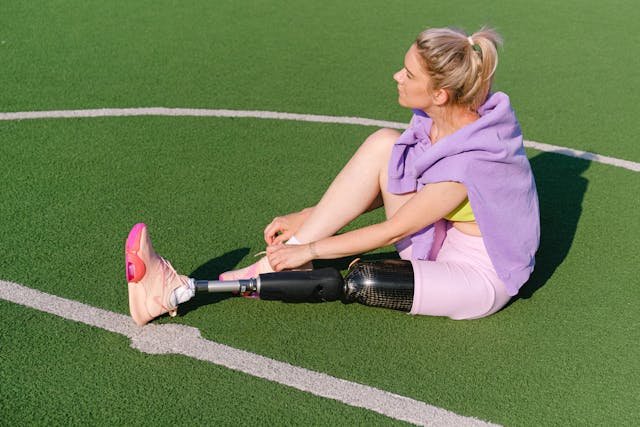
As prosthetic control becomes smarter, the structure and design of prosthetics will also evolve. From lighter materials to more skin-like surfaces, the goal is to make devices feel less mechanical and more human.
Lightweight and Durable Composites
One of the biggest complaints users have is about weight. Heavy prosthetics can cause shoulder strain and fatigue, especially for full-day wear. That’s why the future will focus on using advanced composite materials that are both strong and light.
Newer polymers, carbon-reinforced frames, and 3D-printed elements are already showing great promise. They reduce bulk while still offering the strength needed for daily tasks. As production methods improve, these materials will also become more cost-effective.
This means users—especially those with wrist disarticulation—can expect sleeker, less tiring devices that feel like a natural part of the body rather than a heavy add-on.
Skin-Mimicking Covers and Flexible Designs
Another important trend is making prosthetics look and feel more like natural limbs. New materials are being developed that mimic the softness and texture of skin. These flexible covers will allow the hand to bend slightly, absorb pressure, and feel more lifelike during touch or contact.
This makes a big difference in social situations. When a prosthetic feels less robotic, it helps users feel more at ease during handshakes, hugs, or everyday gestures. The emotional impact of this change is as important as the physical.
Robobionics is working on next-generation cosmetic covers that don’t just look realistic but also allow airflow, flexibility, and comfort during wear—even in India’s hot and humid climate.
Sustainable and Locally Manufactured Options
Sustainability will also shape the materials used in future prosthetics. More prosthetic makers are exploring recyclable parts and modular designs that allow for easier repairs or upgrades without replacing the whole device.
This is especially important in regions like India, where cost and access are major concerns. Locally made, repairable prosthetics will reduce dependence on imported parts and help users get long-term service without long waits or high costs.
Robobionics is deeply committed to this shift. Our design philosophy focuses on building prosthetics that are not just high-performing but also maintainable, adaptable, and proudly made in India.
Sockets Will Become Smarter, Softer, and More Personal
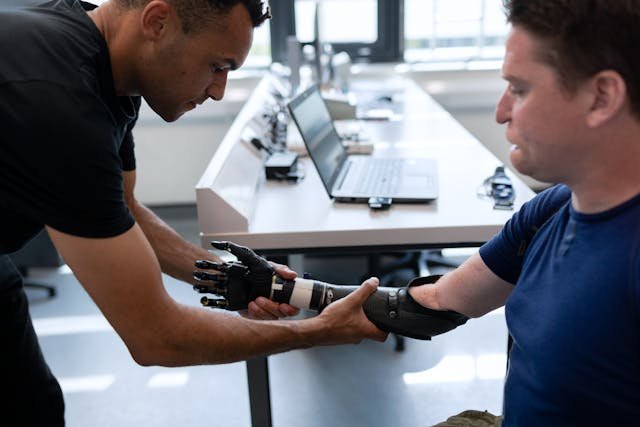
The socket—the part that connects the prosthetic to the user’s limb—is one of the most important elements for comfort. If the socket doesn’t fit well, the best technology in the hand won’t matter. That’s why the future of sockets is focused on flexibility, personalization, and intelligent feedback.
3D Scanning and Custom Fitting
In the coming years, 3D scanning will become the standard for socket design. Instead of using plaster molds or trial-and-error fittings, prosthetists will scan the residual limb digitally and use software to design a perfect fit.
This will not only save time but also reduce the number of adjustments needed. A better initial fit means fewer pressure points, less skin irritation, and more comfort throughout the day. The socket will wrap the limb like a second skin, distributing weight evenly and allowing natural movement.
Robobionics has already integrated 3D scanning into our design process, and we’re working to bring this technology to more clinics across India so that every user gets a fit that feels just right.
Dynamic and Adjustable Sockets
Another exciting trend is the use of dynamic sockets—sockets that can adjust their fit as your body changes. Using air bladders, soft gels, or shape-memory materials, these sockets adapt to swelling, movement, or even daily changes in muscle tone.
This means no more discomfort after long hours of use or hot weather. The socket responds to your body, giving you steady comfort no matter what your day looks like. This is especially helpful for active users who wear their prosthetic for extended periods.
We believe that adjustable sockets will become more available by 2027, as production methods improve and costs come down. Robobionics is already exploring flexible socket solutions for trans-radial users with complex limb shapes.
Embedded Sensors for Real-Time Feedback
Imagine if your socket could tell you where it’s pressing too hard, or warn you if your posture is affecting the alignment. That’s exactly where the next innovation is headed. Smart sockets will come with embedded sensors that monitor pressure, temperature, and movement in real time.
These sensors will send data to a connected app, allowing users and clinicians to make small adjustments before problems arise. It also helps with training, as users can see how their muscle activity affects control, or where they need more support.
By 2030, this kind of feedback will be a normal part of prosthetic use. Robobionics is working on early models that offer real-time socket data to help improve comfort and reduce long-term wear issues.
Sensory Feedback Will Bring Back the Sense of Touch
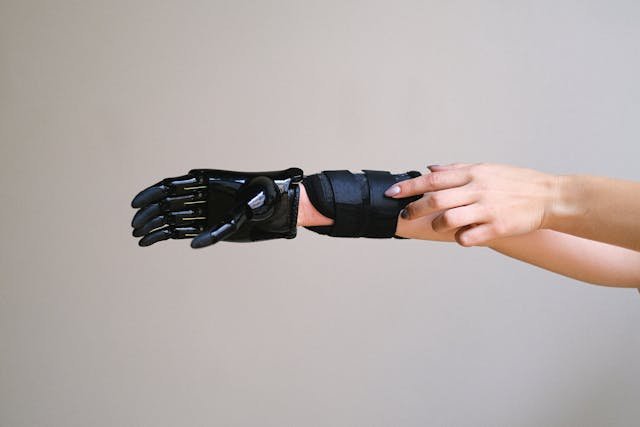
One of the most powerful trends in upper-limb prosthetics is the return of touch. Until now, prosthetic users have had to rely on sight and sound to control their device. But by 2030, more users will feel what they’re holding—with real-time sensory feedback.
Vibration and Pressure Response Systems
New feedback systems use tiny motors inside the prosthetic to create vibration or pressure against the skin. When the user grips an object, the prosthetic sends signals to let them know how firm the grip is. This helps prevent dropping items or crushing fragile ones.
Over time, the brain starts to connect these signals with touch. Users learn to recognize textures, weights, and pressure levels—just like with a natural hand. This brings a whole new level of control and connection to daily activities.
Robobionics is exploring these systems for our future models, with the goal of making sensory feedback available even in cost-sensitive markets without compromising performance.
Nerve Interfaces and Direct Stimulation
For some users, especially those with recent amputations, direct nerve stimulation may become an option. Electrodes can be placed near the nerves in the residual limb to deliver signals that the brain interprets as touch or temperature.
While this technology is still being refined, early results show promise. Users can feel where the hand is touching, and even detect hot or cold surfaces. This level of sensory feedback helps restore a more natural relationship with the world around them.
Though nerve interfaces may not be widely available until the end of the decade, their development points to a future where prosthetics do more than move—they feel.
Emotional Impact of Regained Sensation
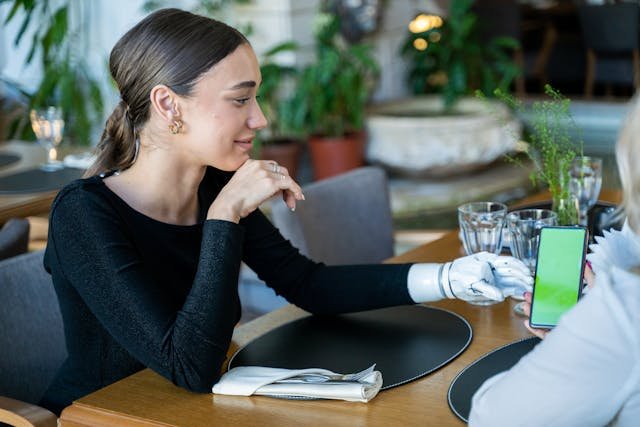
Being able to feel again is not just a technical achievement—it’s emotional. Many users say that touch helps them reconnect with their body, their family, and their daily life in new ways. Simple acts like holding a loved one’s hand or feeling the warmth of a cup can change everything.
This emotional connection builds confidence, reduces self-consciousness, and deepens the sense of ownership over the prosthetic. At Robobionics, we believe this human side of innovation is just as important as the technical one—and we’re building toward a future where both come together.
Excited about what’s ahead? Stay connected with Robobionics to be the first to explore these future-ready technologies made for real users across India.
Digital Tools and Virtual Rehab Will Transform Training
Getting a prosthetic is just the beginning. Learning how to use it properly—especially for fine movements—takes time, patience, and consistent practice. Between 2025 and 2030, digital rehab tools will completely change the way users train and adapt to trans-radial and wrist disarticulation prosthetics.
Gamified Rehab at Home
Traditional rehabilitation often requires regular visits to a clinic. While this is important, it can be hard to keep up, especially for users living in smaller towns or with busy schedules. That’s why gamified rehab is becoming such a powerful tool.
With smart sensors, mobile apps, and engaging exercises, users can now train at home in a way that feels more like a game than a routine. These tools help users practice gripping, rotating, or performing daily tasks in a virtual environment, giving real-time feedback on performance.
At Robobionics, we already offer gamified home-based rehabilitation as part of our prosthetic journey. By 2030, this technology will become even more immersive, using virtual and augmented reality to simulate real-life situations—like cooking, writing, or typing—and helping users build muscle memory faster.
Tele-Rehab and Remote Support
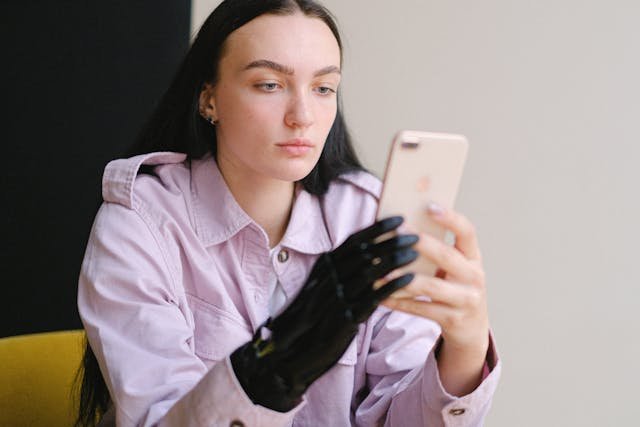
As digital healthcare becomes more common, prosthetic support will also go virtual. Tele-rehab allows users to connect with physiotherapists, prosthetists, and support staff without leaving home. This is especially helpful for check-ins, adjustments, and training tips.
With wearable sensors on the prosthetic, experts can monitor alignment, motion patterns, and grip strength in real-time and offer guidance to improve efficiency. These sessions are not only convenient—they also keep users motivated with regular progress tracking.
Robobionics has built tele-rehab into our service network to make sure users across India get the same level of care—no matter where they live. In the future, we expect these tools to be part of every user’s recovery plan, combining technology with human guidance.
Personalized Progress and Motivation
Future rehab systems won’t just show you what to do—they’ll track your progress, celebrate milestones, and adjust exercises to match your pace. This personalized approach means fewer setbacks, better results, and more motivation to continue.
Users will be able to set goals, measure hand usage, and receive digital badges or encouragement for hitting daily or weekly targets. This kind of feedback turns rehab into a rewarding journey instead of a task.
By combining fun, structure, and feedback, digital rehabilitation tools will help more users adapt to their prosthetic faster and with more confidence—especially those learning to use advanced trans-radial and wrist-level prosthetics for the first time.
Conclusion
The future of trans-radial and wrist disarticulation prosthetics is full of hope, progress, and human possibility. From 2025 to 2030, we will see smarter control systems, lighter and more lifelike materials, better socket designs, and even the return of real-time touch sensation. Combined with personalized training and digital support, these changes will bring prosthetics closer to feeling like a natural part of the body—not just a tool.
At Robobionics, we’re not just watching this future happen—we’re building it. As a proud Indian company, we’re committed to making these global advancements available and accessible to people right here at home. Whether you’re exploring your first prosthetic or looking to upgrade, the coming years will open new doors to comfort, connection, and confidence.
Curious about what the future holds for your prosthetic journey? Book a free consultation with Robobionics today and discover how tomorrow’s technology can become part of your life today.



